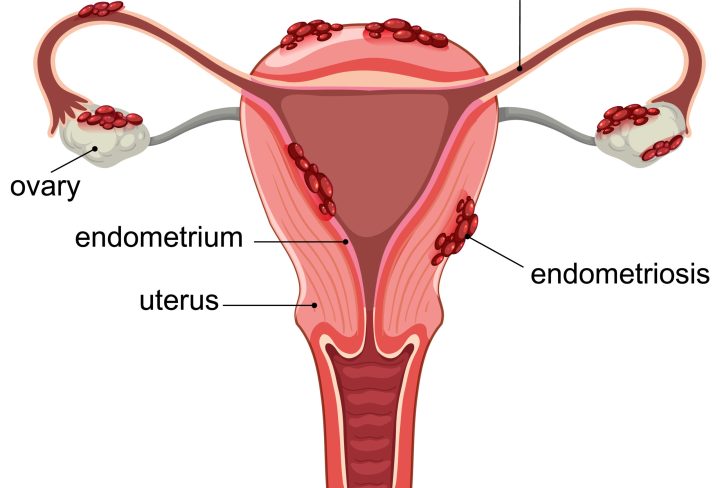Endometriosis is a condition that affects many women, causing significant impact on their daily lives. It occurs when tissue similar to the lining inside the uterus starts to grow outside it. This results in pain and, sometimes, fertility issues. Many women wonder: Is endometriosis your fault? The truth is, it’s a complex condition and not something anyone causes themselves.
Understanding endometriosis is crucial. Our goal here is to explain its causes, debunk myths, and assure you that self-blame helps no one. Knowing more about endometriosis can empower you to manage it better. It’s about replacing myths with facts and understanding the real nature of this condition.
Unpacking Myths and Misconceptions Around Endometriosis
There are many myths and misconceptions surrounding endometriosis. One common belief is that personal hygiene or lifestyle choices can make endometriosis better or worse. Another myth is that endometriosis happens because of personal faults or something women did wrong. These are not true. Is endometriosis your fault? Absolutely not.
The reality is, doctors don’t know the exact cause. However, they suspect it involves genetics, the immune system, and perhaps environmental influences. It’s important to note that endometriosis causes are not linked to anything women do or don’t do. It’s a medical condition, much like other chronic diseases.
It’s time to debunk these myths about endometriosis:
- Myths about endometriosis revolve around hygiene and lifestyle choices; none of these are linked to the actual causes.
- Understanding endometriosis leads to better management, not personal blame.
- No evidence suggests personal actions lead to the condition.
Be assured that whatever you’re experiencing, it’s not because of something you caused. Endometriosis facts suggest it’s a result of various non-controllable factors. So, if you’re experiencing symptoms, seeking medical advice is the first step, not self-blame.
Living with Endometriosis: Symptoms, Impact, and Emotional Burden
Living with endometriosis can be a tough journey. Common endometriosis symptoms include pelvic pain, especially during periods, and sometimes trouble getting pregnant. But endometriosis signs can be quite different from one woman to another, making it hard to predict or manage without help.
Some women have severe symptoms, while others may have mild issues but still experience pain. What’s key here is understanding that the pain and unpredictability of endometriosis can impact your life significantly.
Emotionally, endometriosis can be just as challenging. The physical symptoms often bring stress and anxiety. This is why mental health support is so crucial. Sharing your experiences with family or support groups can be a big help. Recognizing the emotional burden is the first step to finding a way through it.
Several symptoms to be aware of include: – Intense pelvic pain – Heavy periods – Possibly, infertility problems
These endometriosis facts highlight the importance of not ignoring symptoms. If you suspect endometriosis, reach out to health professionals. It is essential to have a good support system to get through the ups and downs.
Taking Action: Seeking Help, Diagnosis, and Treatment Options
If you think you might have endometriosis, talk to a healthcare provider. They can help diagnose your symptoms. The diagnosis process involves looking for endometriosis signs through exams or imaging tests like ultrasounds.
When it comes to endometriosis treatment options, know that they vary. Depending on your symptoms, different strategies might work best. Pain management is often a big part of treatment. Doctors might recommend:
- Over-the-counter pain relief
- Prescription medications
- Hormone therapies to reduce symptoms
For those with severe symptoms, surgical options might be considered. It’s about finding what works for you. And knowing there’s no one-size-fits-all answer is part of the journey.
- Endometriosis pain management can include simple methods like applying heat or dietary adjustments.
- Hormonal treatments may help regulate periods and lessen symptoms.
- In more challenging cases, surgery might be suggested to remove excess tissue.
Remember, effective endometriosis treatment options depend on individual needs. It’s about collaboration between you and your healthcare team.
Finally, embracing a multidisciplinary approach to managing endometriosis can make a difference. This means combining medical treatment with lifestyle adjustments and emotional support. Understanding endometriosis involves recognizing both its physical and emotional dimensions. You’re not alone—the right mix of strategies can lead to a more comfortable life.
So, if you’re beating yourself up about your symptoms, stop asking, is endometriosis your fault? It’s not. By seeking information and support, you’re taking the right steps. Surround yourself with healing options, both physical and emotional, to navigate this journey with hope and resilience. There’s a whole community ready to support you.
